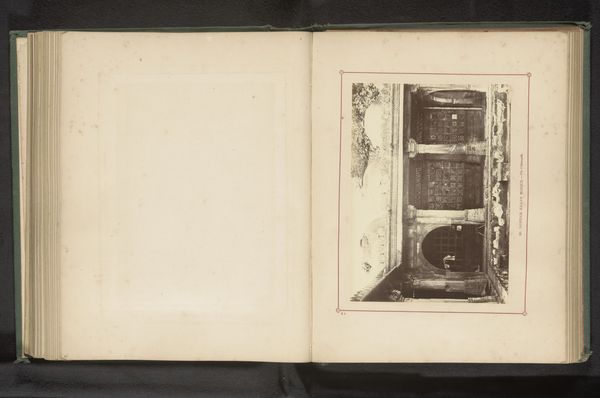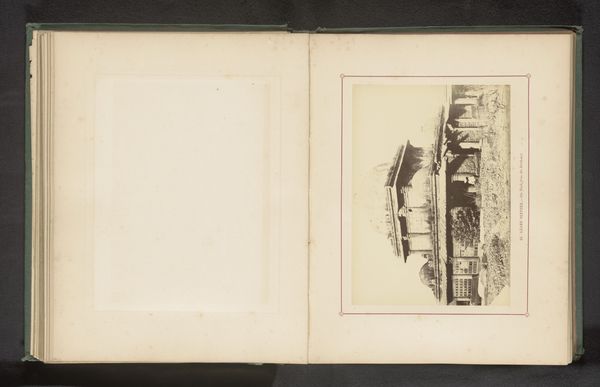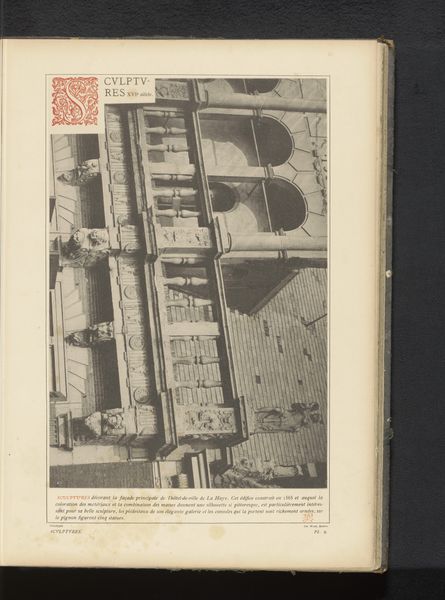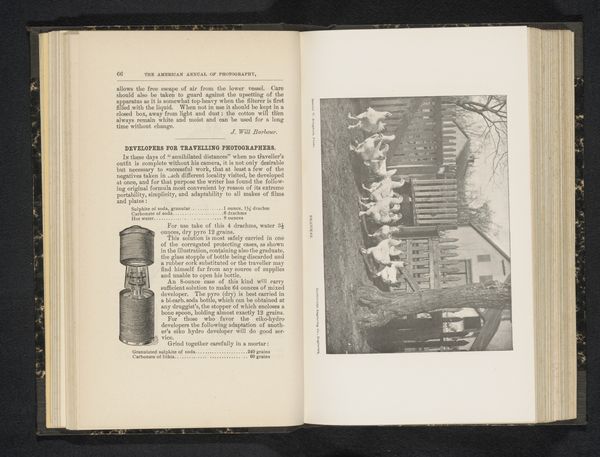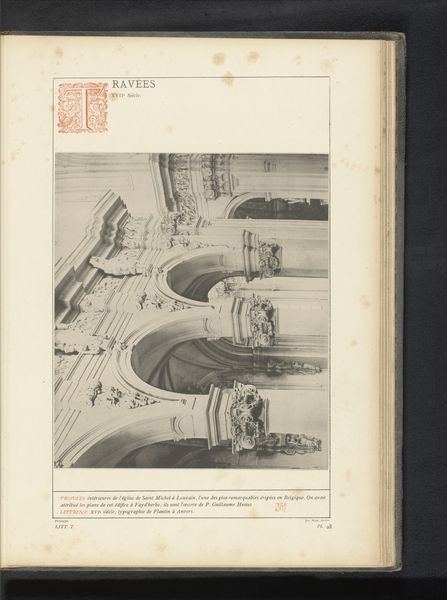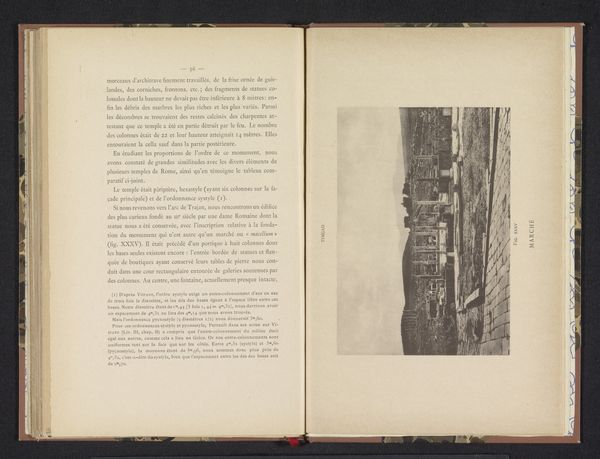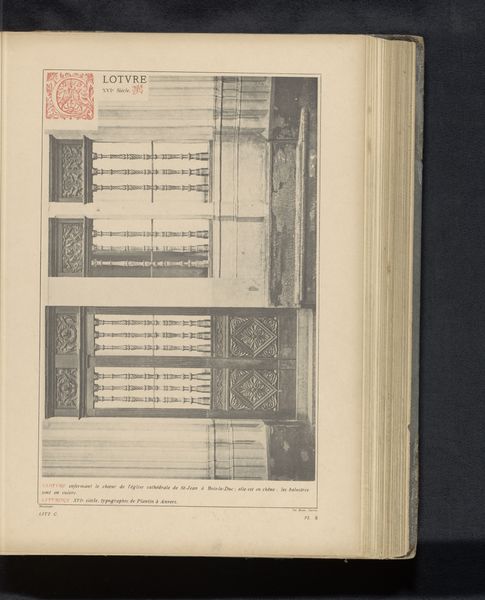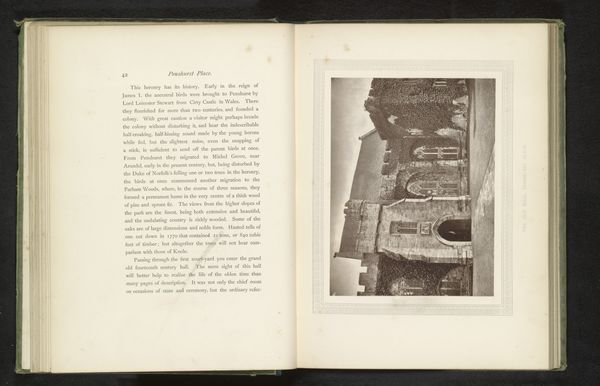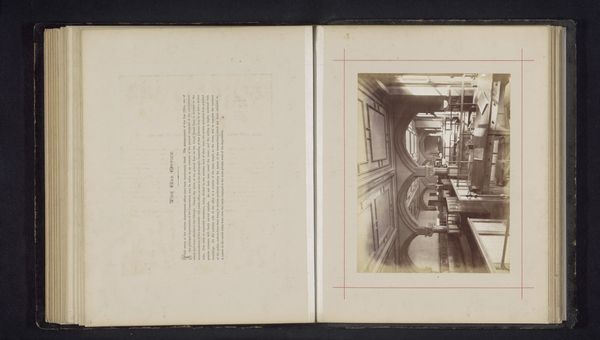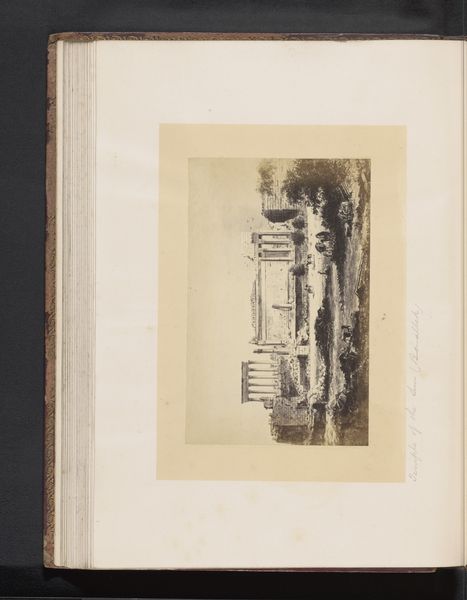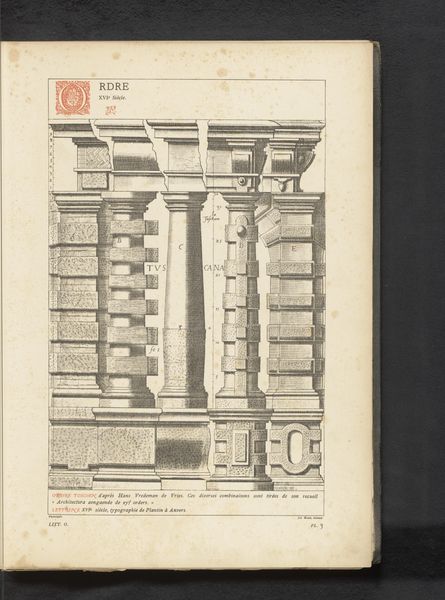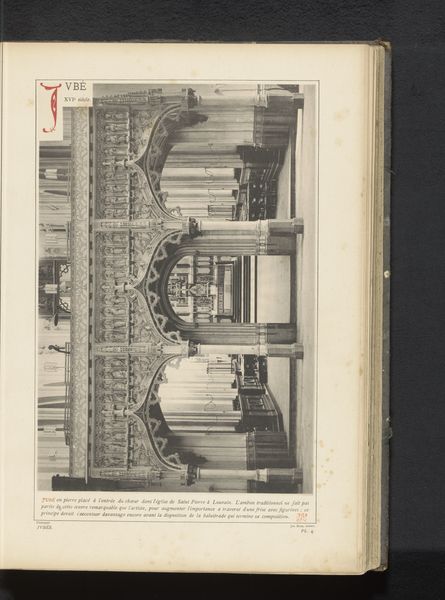
Twee kraagstenen aan de voorzijde van het Maarten van Rossumhuis in Zaltbommel before 1880
0:00
0:00
print, engraving, architecture
#
medieval
# print
#
cityscape
#
engraving
#
architecture
#
historical font
Dimensions: height 230 mm, width 338 mm
Copyright: Rijks Museum: Open Domain
Editor: Here we have an engraving, circa 1880, depicting "Twee kraagstenen aan de voorzijde van het Maarten van Rossumhuis in Zaltbommel," which translates to "Two corbels on the front of the Maarten van Rossum House in Zaltbommel." It’s interesting to see architecture rendered through this printmaking medium, adding to its historical document value, right? What catches your eye when you look at this image? Curator: It immediately makes me think about the relationship between architecture, power, and its representation in visual culture. We see a very specific depiction of corbels on a significant house, documented and disseminated via printmaking. What's fascinating is thinking about who this print was intended for. Was it meant to celebrate civic pride, to serve as an architectural study, or to reinforce particular socio-political ideas about the region's past and present? Editor: So, it’s less about the aesthetics of the building itself and more about the message it's trying to convey? Curator: Exactly. Consider how museums and archives collect and display objects like this. These images often become symbols, carrying meaning far beyond the architectural details. It’s crucial to ask whose stories are being told, and whose are being left out in these portrayals of architectural heritage. Do you see any symbolic significance in its form? Editor: Well, it certainly evokes a sense of the medieval, which maybe was a deliberate choice to add gravity and history to the building. Curator: Precisely. It reinforces the selective remembering of history that often occurs in civic architecture. Think about how this image might function differently in, say, a local history museum versus an art museum, and how that context shapes its interpretation. Editor: This has shifted my understanding. I was looking at it as a technical drawing, but now I see it as a piece of social commentary too. Curator: Indeed. It shows the intricate interplay between artistic representation and the socio-political climate of its time. Recognizing that transforms how we interpret art.
Comments
No comments
Be the first to comment and join the conversation on the ultimate creative platform.
